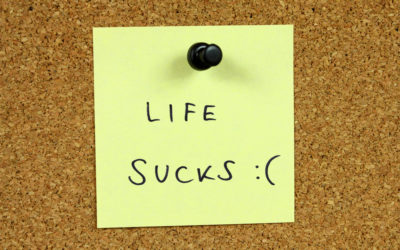People come to me all the time to talk about what they want to create and specifically, what they see as the barriers to creating. They complain about their personality quirks; that they are procrastinators or don’t have follow through. They lack discipline or confidence. My reply to them is always the same, “That’s simply not true. Your only problem when it comes to creating in life is you’re not actually in the creative problem that you want to solve.”
To deepen this, I ask, “How did they get to the moon and back?” My clients often look at me puzzled and hesitantly say, “Uh… a rocket ship.” To which I ask, “Is that it?” Slowly, they add more and more things that had to be done to get to the moon and back. Of course, they can not list every single minuscule step that was taken to get to the moon and back so I sum all of that up with, “They got to the moon and back by doing no less than what was required to get to the moon and back. They may have done more, but for sure, they did no less than what was required. Period.” And then I ask, “And how do I know this?” And we say together almost in song, them catching on, “Because they actually traveled to the moon and back.”
To take it even deeper, I point to a pen on the table and say, “This is how you pick up a pen,” and as I say that I scoop my hand about one or two inches ABOVE the pen. They gaze at me even more puzzled thinking perhaps that I’ve gone mad as I’ve quite obviously not picked up the pen. I smile and say, “You see how easy that is – picking up a pen” and I again scoop my hand just over the pen, again not actually picking it up. I’ll continue to do this several times showing such pride in my method to picking up a pen.
Finally, they’ll ask, “What the heck are you getting at?” to which I respond, “Simple. When it comes to getting to B, to accomplishing goals, to living your life, you think you matter. You think your view rules the day. Not everywhere, but in some places, you think you are relevant to the problem. You think it matters whether you like doing it or not. You think it matters whether you’re good enough to do it or not. You think it matters if you think it’s fair that you have to or not.”
I’m not suggesting there is one solution to every problem. If two people decide to go to California, one may choose to fly and the other may choose to drive. But if either go to St. Louis and declare they made it to California, others would look at them just like my clients do with my rendition of picking up a pen. Why? Again, because the problem of traveling to California requires what IT requires. It doesn’t require what you think it should require. And while you may think I’m pointing towards ramping you up so you can push through and meet the demands of the problem, I’m not. I’m pointing to the space of the actual problem so that you can rest in the problem, rather than rest in what you’ve added to the problem.
When Kennedy declared they would travel to the moon by the end of the decade, the creative problem “Going to the moon and back,” didn’t care one iota that some of the math, physics, and engineering hadn’t yet been invented. Life didn’t say, “Oh jeez, I’m sorry. You don’t know all there is to know, or you think it’s too hard, or you don’t think you’re good enough or you think Kennedy is naive. I really didn’t mean to make it so hard. Let me lower the requirements.” No! The requirements were what they were and the way that problem was solved was by people resting in and engaging with the problem until they discovered what was actually required.
While this may be obvious, if you look, there are some areas of your life, where you’re not resting in the actual creative problem. Instead, you’re wrestling with requirements that you’ve added. Now the truth is that most of your life is lived resting in what’s actually required in life. All day long without giving it much thought at all, there you are engaged in life, living your life, doing what’s required wholly and completely. It’s easy to overlook life where it’s working.
The places where you struggle – where it doesn’t seem to be working – are exceptions. In those exceptions, you’re often not in what’s required. You’re outside the problem, resisting it in some way. You’re in your opinions about what should or shouldn’t be. When I wave my hand over the pen and call that picking up the pen, it’s easy to see that I’m not in the actual problem of picking up the pen AT ALL. I’m deluding myself. You and I think that when we beat ourselves up over the fact that we think we are procrastinators or lack follow through or discipline or whatever your brand of delusion is, that we are actually in the problem. When we are upset and complaining that those who are on the “other side” of our issues shouldn’t be on the other side and “Oh my god, why can’t they see. Are they stupid, evil or stubborn?” we actually think that all that complaining matters. And while it may matter to you, it doesn’t matter to the creative problem. Life doesn’t care one bit about your opinions and in fact, the only thing your opinions accomplish is to create an artificial separation between you and life.
So when you’re struggling, just remember the question: “How did they get to the moon and back? By doing no less than what was required to get to the moon and back.” But don’t remember that to get yourself ramped up about the problem; instead, do it simply so that you can rest in the problem.
Do it so you can rest in life.
Do it so you can rest in who you truly are – the space inside of which all of life, including creative problems (as well as our neuroses and opinions), shows up.

Bill Giruzzi has been engaged in the study of transformation for over 25 years. A former attorney, he transitioned from the practice of law in 2004 to follow what he considers his true calling – being a coach. In 2009, he published his book A Life Worth Living which put forth a new possibility for humanity and our planet with a short follow-up e-book in 2015 entitled Solving the Unsolvable: Transforming Our Planet in 25 Years or Less. Today, Bill’s focus is on developing leaders committed to realizing impossible looking futures. He accomplishes this primarily by sitting with people for 3 days exploring the nature of who they really are as well as the nature of performance and leadership.










